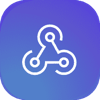Integrate with Webhook

A URL endpoint can be any platform, web server, and so on as long as the URL is accessible from the Web. Webhook data includes alert activity (create, acknowledge, etc) as well as a subset of the alert fields (alert ID, username, alias, entity, user ID) as part of the HTTP request payload (JSON). You can also define custom headers to add the Webhook call. Send the alert description and alert details by simply selecting the related checkboxes.
The Description and Details fields are truncated to 1000 characters in the alert action data sent by the Webhook integration.
Add a Webhook integration
The following capabilities are available in Jira Service Management Premium and Enterprise:
Bidirectional integrations
Outgoing integrations at the team level
Integrations at a site level through Settings (icon) > Products (under Jira settings) > Operations
To access Jira Service Management Premium features, you must subscribe to a Service Collection Premium or Enterprise plan.
Adding an integration from your team’s operations page makes your team the owner of the integration. This means Jira Service Management only assigns the alerts received through this integration to your team.
Webhook is an outgoing integration which means you should be on a Premium or Enterprise plan to use it. To add a Webhook integration in Jira Service Management, complete the following steps:
Next to Operations in the sidebar, select More actions (), then General configuration.
Select Integrations and then Add integration.
Run a search and select “Webhook”.
On the next screen, enter a name for the integration.
Optional: Select a team in Assignee team if you want a specific team to receive alerts from the integration.
Select Continue.
The integration is saved at this point.Select Edit on the integration configuration page.
The Edit integration settings dialog opens.Select Authenticate with a Webhook account.
Paste your webhook URL into Webhook URL.
Configure additional HTTP headers for your webhook calls.
Select Add alert description to payload and Add alert details to payload if needed.
Select Save.
Select Turn on integration.
The rules you create for the integration will work only if you turn on the integration.
The options Add alert description to payload and Add alert details to payload are only available for Create and Custom alert actions.
Map alert actions
Jira Service Management allows you to post Webhook URL for alert actions. Use Post to Webhook URL for Jira Service Management alerts section to post alert actions to the given URL. For example, add post to the URL when the alert is created. To do this, define "If alert is created in Jira Service Management", "post to url" mapping.
"a tag is added to the alert" and "a custom action is executed on alert" actions differ from other actions. When either action is selected, an extra field appears to enter for which tags or for which custom action this mapping works.
Enter multiple tags by separating the tags with a comma. If multiple tags are entered, the mapping works if the alert has one or more of the specified tags. Leave the tags field empty for the mapping to work for any tag.
If a Jira Service Management action is associated with multiple "post to URL" actions in Webhook integration, an error occurs except for the "a tag is added to the alert" and "a custom action is executed on alert" actions. You can save multiple mappings for only these actions, because they differ by the given tags and the given custom action names.
For sample Webhook data for different actions, see Jira Edge Connector alert action data.
Was this helpful?